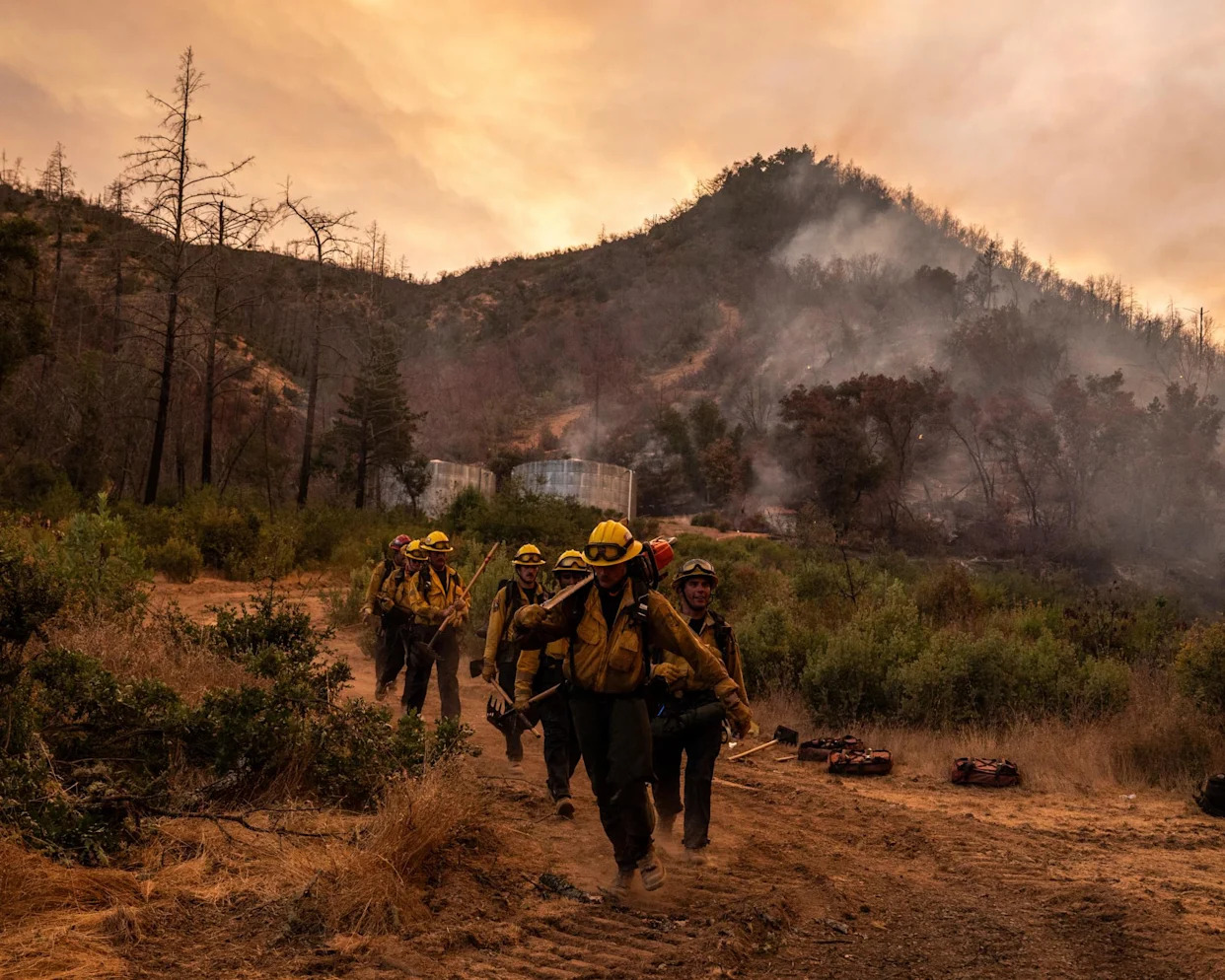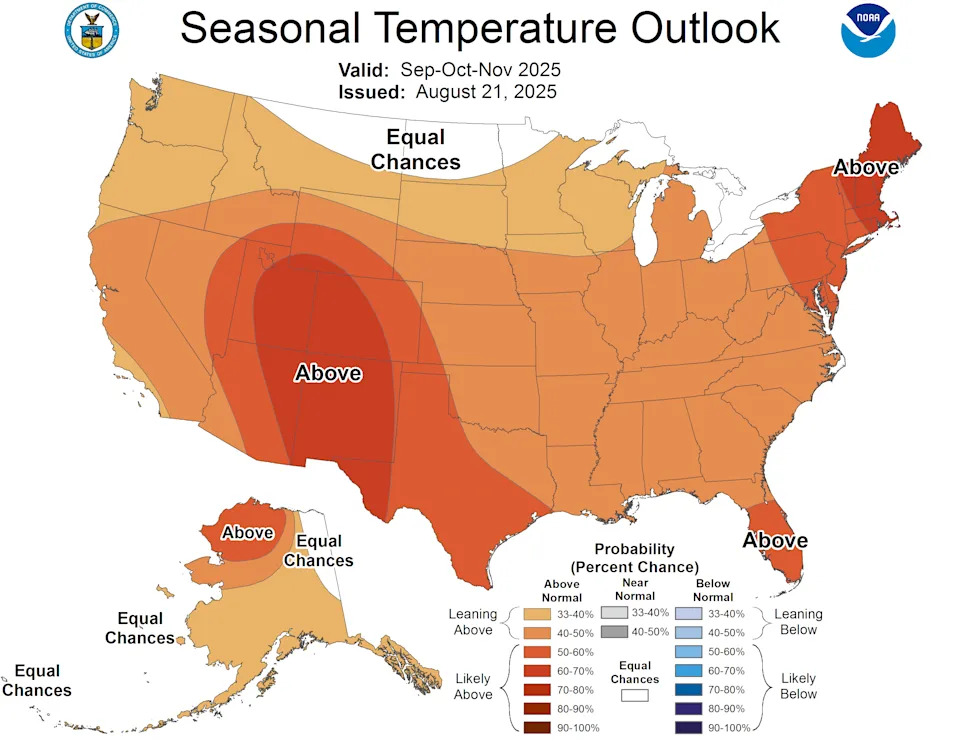
Multiple wildfires have ignited across California as the state continues to scorch in a multi-day heatwave that is expected to last through the weekend.
The largest this week, named the Pickett fire, exploded in size on Thursday as it burned in a remote area of Napa county, and covered more than 2,100 acres (850 hectares) by Friday morning. Evacuation orders and warnings have been issued Thursday for hundreds of residents around Calistoga, a small city in the region known for its wine, as firefighters faced challenging conditions, working through dangerously high temperatures and rugged terrain. The fire’s perimeter is 0% contained.
“Firefighter safety will be an emphasis once again Friday, with temperatures expected to reach into the upper 90’s,” analysts with the state fire agency known as CalFire wrote in an update issued Friday.
Bob Todeschini, the battalion chief on the Pickett fire, said there had been no injuries or structures damaged, in a video shared on social media on Thursday night. “We’d like to remind everyone to be vigilant and have a plan as we continue with suppression efforts,” he said.
Fire risks remain exceptionally high in parts of California and the American west with high temperatures expected to linger for days. “Hot, dry, and unstable conditions are likely along much of the West Coast near and west of the Cascades and Sierra as near record-setting temperatures 10-25F above normal are expected,” according to an analysis from the National Interagency Fire Center issued on Friday.
Paired with low humidity and a chance of dry thunderstorms that could produce lightning strikes, more fires could ignite and rapidly grow.
It has already been a busy year for fire, with more than 44,800 ignitions across the US – more than any other year in the last decade, according to NIFC statistics. More than 16,500 wildland firefighters and support staff are currently battling blazes covering a combined total of roughly 912,400 acres.
Even after this heatwave subsides, the risks will remain. With minimal moisture in areas of California and the Pacific north-west, fire dangers are expected to climb through the next month and into October. Vegetation is dangerously dry and overgrown in parts of Nevada, California, Utah, Arizona, Colorado and Wyoming, according to NIFC advisories that “point to areas where hot, dry conditions can quickly turn a spark into a fast-moving fire”.
The heat – which will bake moisture out of already parched landscapes and increase the potential for ignitions, rapid fire spread, and extreme fire behavior – also create significant threats to public health.
The National Weather Service has issued extreme heat alerts across the region, extending from Arizona to Washington, warning that the high temperatures could break numerous local daily records and will “pose a threat to anyone without effective cooling and adequate hydration”.
The heat will also linger after the sun sets, offering little reprieve overnight. High nighttime temperatures will add challenges to containing fires that erupt and increase the dangers for people unable to access cooling. “Numerous nighttime temperature records are likely,” the NWS said in a Thursday warning. “Without A/C or cooling, the body can’t recover, increasing the risk of heat illness.”
Extreme heat, often called a “silent killer”, already ranks as the most lethal weather-related disaster in the US, and deaths are increasing. Fueled by the climate crisis, and often exacerbated by concrete cityscapes that cook when temperatures rise, heatwaves are getting longer, larger and more intense.
The heatwave is expected to begin calming down after Sunday in California and south-western states, but could continue through the middle of next week in the Pacific north-west.








Comments